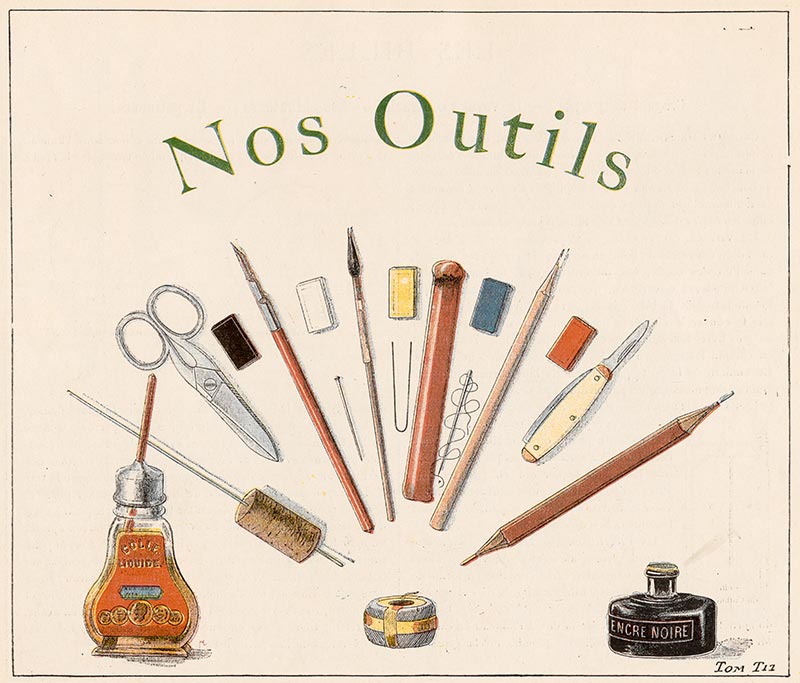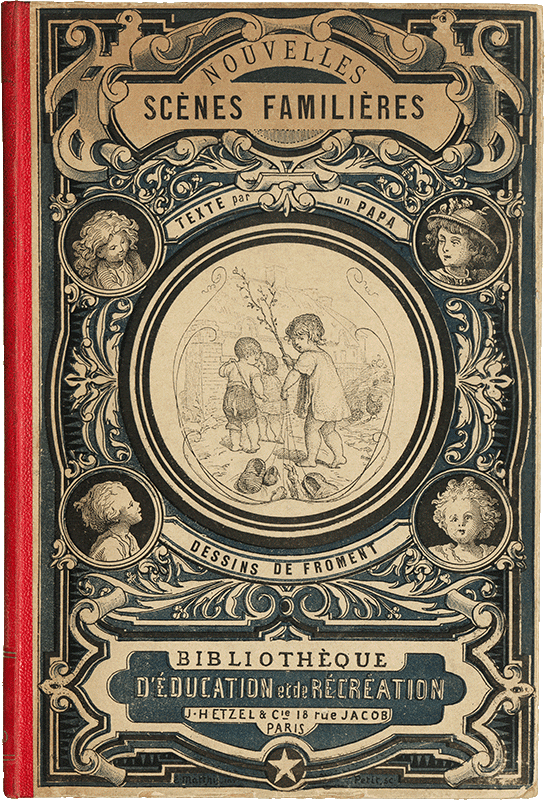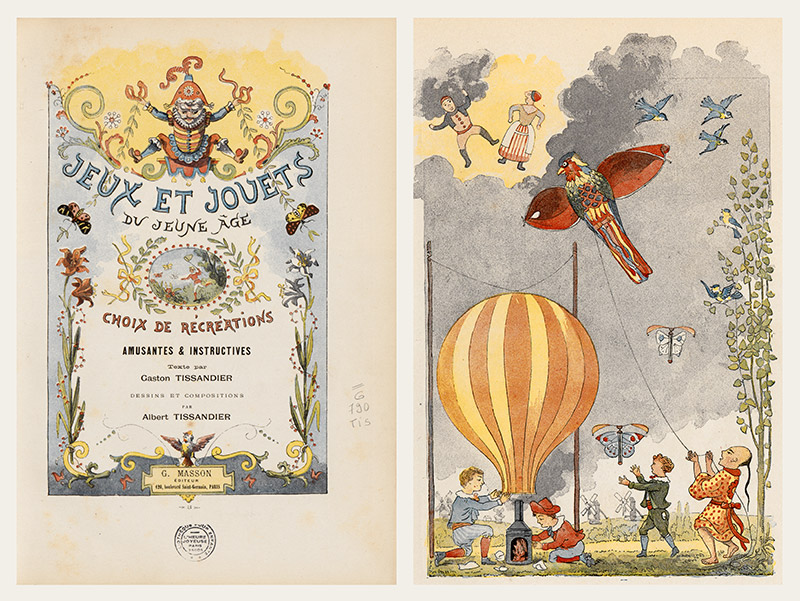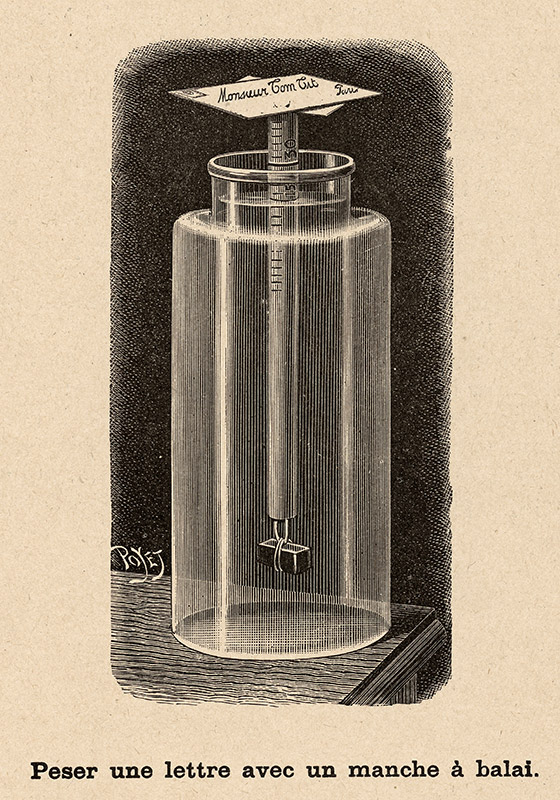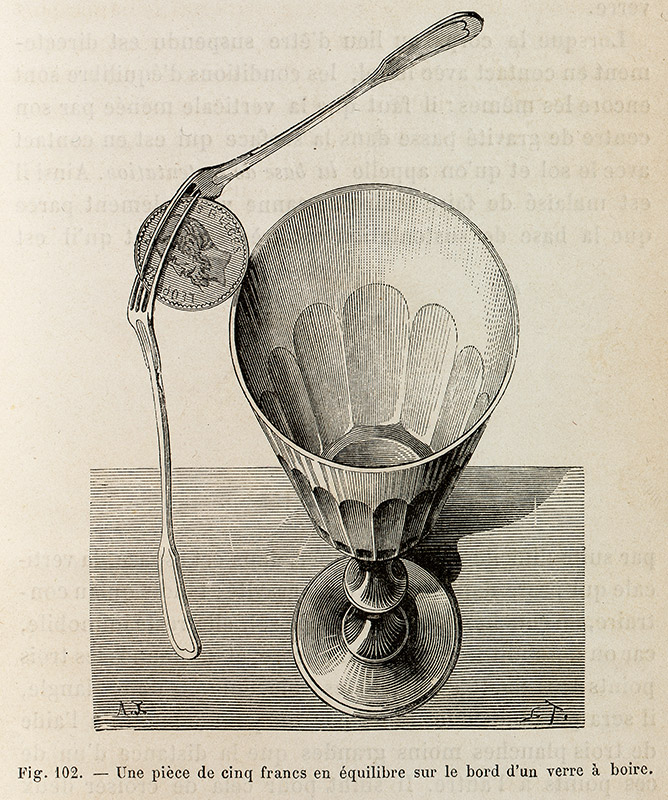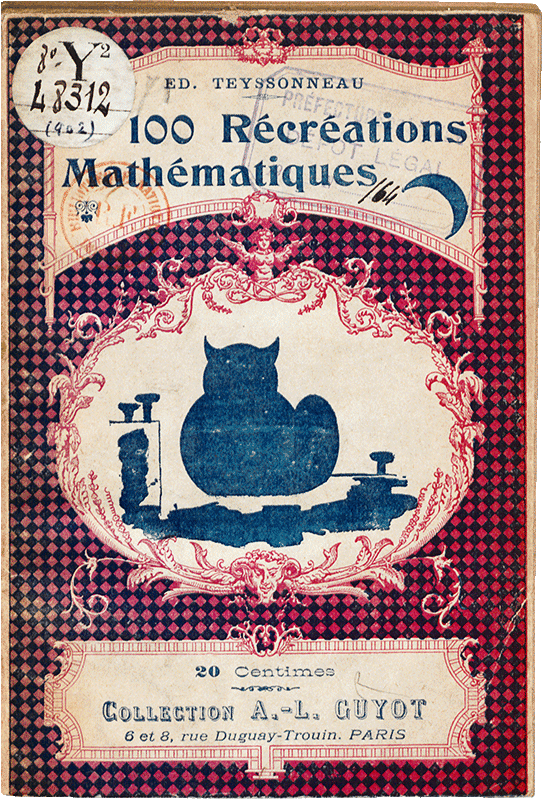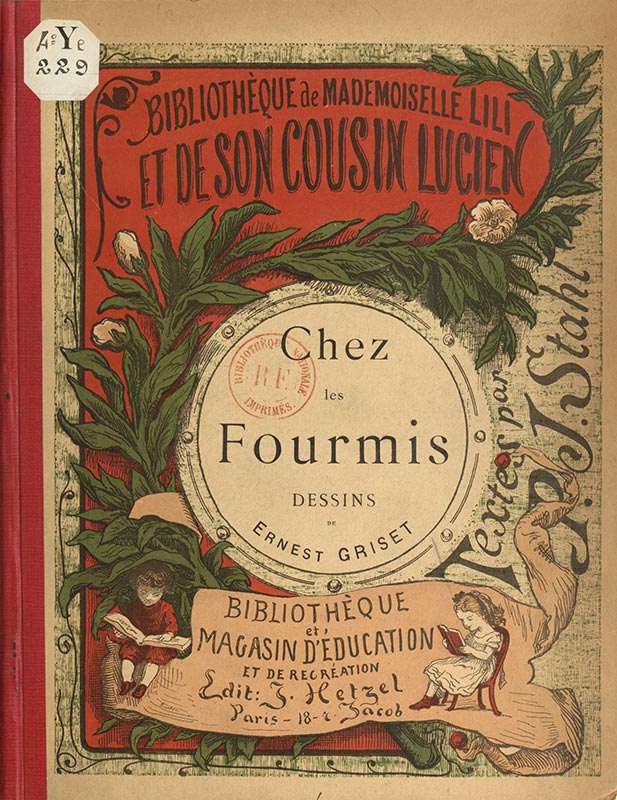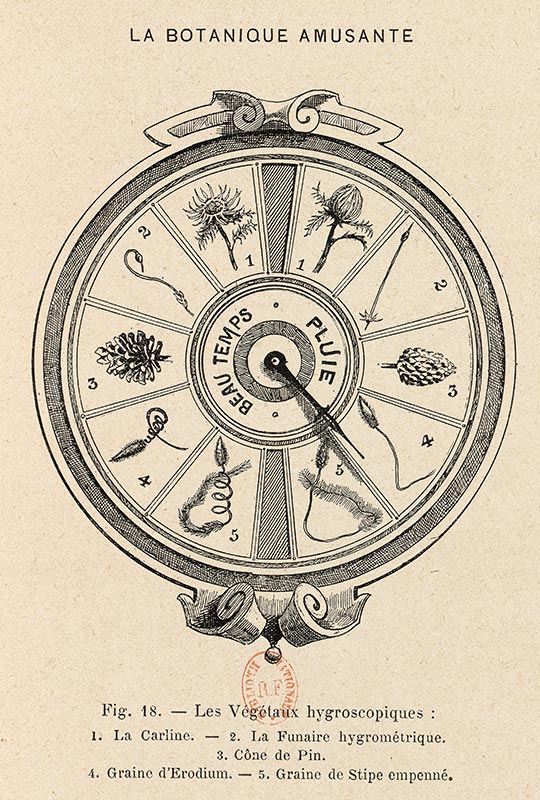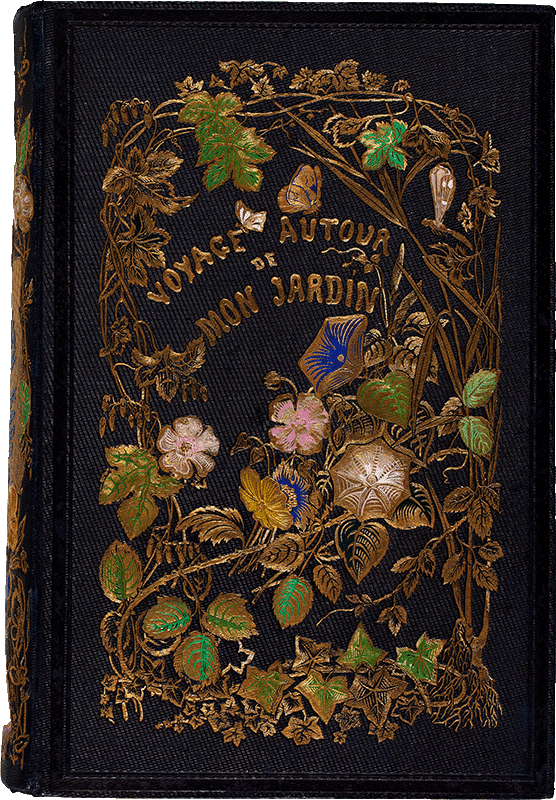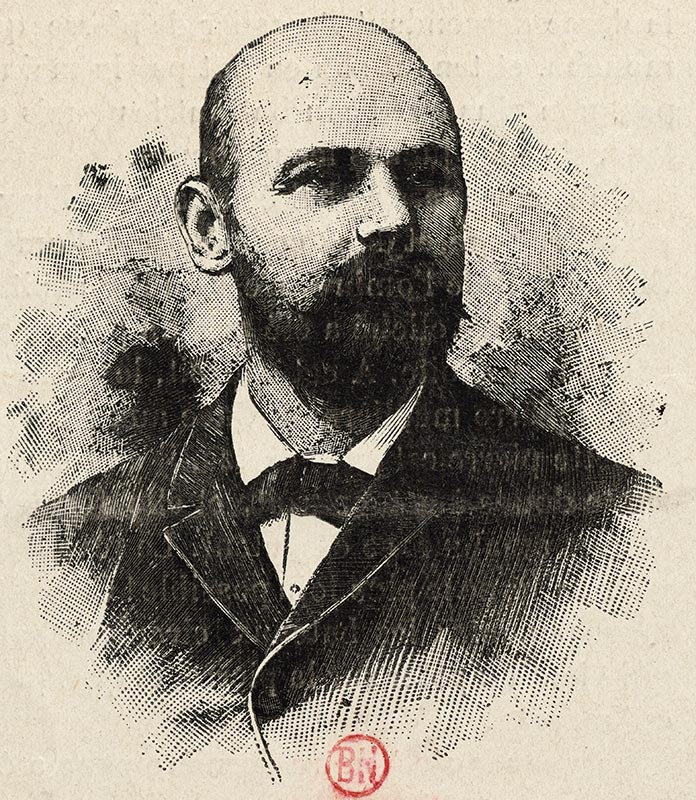Fun with Science
“It seemed like a worthy idea to draw attention to this charming little toy that has had great success with children. It has the indisputable virtue of introducing them at a young age to all the main phenomena of static electricity, and to teach them physics in an entertaining way.”
Tissandier, Gaston, Les récréations scientifiques (Scientific Amusements), 1883, p. 215
Jeux et jouets du jeune âge: choix de récréations amusantes et instructives
(Toys and Games for Young Children: A Selection of Educational and Entertaining Amusements), Gaston Tissandier, 1884.
Outside of school, a wide range of methods were used to introduce children to science. Writers and publishers counted on colorful images to catch youngsters’ attention.
Everything from illustrated board games about scientific topics to build-your-own toys were used to make sums, geometry and nature fun.
Tom Tit’s series, La Science amusante (Magical Experiments, or Science in Play), offered recreational experiments that made it even easier to learn in a playful way.
Many other publications were devoted to hands-on chemical, physical or mathematical experiments. The authors said that they were easy and generally inexpensive, and that anyone could do them.
Jeux et récréations scientifiques: applications faciles des mathématiques, de la physique, de la chimie et de l'histoire naturelle
(Scientific Games and Recreations: Easy Applications for Mathematics, Physics, Chemistry and Natural History), Auguste Héraud, 1884.
Trying to balance a coin on the edge of a glass with forks, for example, could help children understand the idea of a center of gravity, a physics concept.
Or, in 100 récréations mathématiques (100 Recreational Math Activities), reproducing a drawing of a cat with a ruler and a compass offered an entertaining introduction to some basic geometry notions.
Many of the books were devoted to botany and zoology. Children were urged to observe what was around them and to perform experiments “both out of doors and in your apartment.”
In his “experiments and recreational activities with stems, roots, leaves and flowers,” for instance, Ferdinand Faideau explains how plants can act as hygrometers, measuring humidity.
Books that made science fun, like Tom Tit’s and Tissandier’s, were often handed out as prizes at school. The books, which were awarded to the best pupils or given as holiday gifts, were adorned with elaborate covers, often published by Mame or Martial Ardant.
Those gift editions constituted a particularly lucrative market, for both publishers and bookbinders alike.

